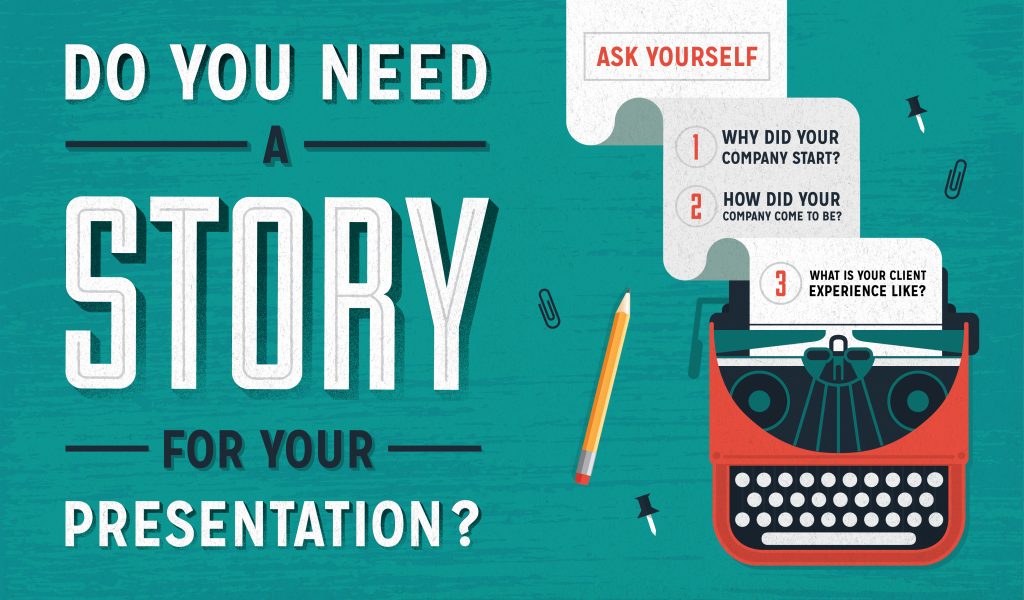When we suggest a “storytelling-based approach” on a call with clients, shock and confusion sometimes follows. This is either because the idea itself is counterintuitive, or they just aren’t sure what kind of story they could showcase.
Stories are one of the best way to compel your audience to listen and then give them information that will stick. They engage your audience and also help them become more emotionally connected to your message. You already know the difference between a story-laden TED talk and a data-heavy work presentation, but may not know how to become more like TED in your own speeches.

If you’re searching for the right story, try answering these three questions, and then selecting the strongest narrative to frame your next presentation:
Why did your company start?
Your CEO or your team probably didn’t start your company to be a “me too!” solution in a crowded marketplace. Mostly likely, you knew that there needed to be something different than the competitors in the market, and that your company could solve the problem. What was the problem that your company solved? Why did your company start? Spend some time describing what the world was like before your specific solution, and then describe how things have changed or will change once your solution integrates with the market.
How did your company come to be?
This is a different narrative than describing “why” your company began. It’s more about the journey itself; the late nights, the early mornings, the rejection and struggle. You might describe how your team formed, your best eureka moments, or any other story that gives your audience a behind-the-scenes look at how your company came together against all odds.
What is your client experience like?
This question could encompass so many stories that it could fuel presentations for you both today and long into the future. You could describe the experience of a single fictional client, a future client, a person’s experience with the competition, or a potential client searching for a solution. Anyone who interacts with your company (or should!) can become a main character in the narrative of your deck. Whether it’s a fictional story or not, your audience will have a clear view of how your company works. For example, if you are pitching a cafe in a busy downtown area that lacks cafes, you may tell the story of a worker wandering around in circles looking for the perfect cup of joe. Consider your clients past and present, and then work on developing a presentation that showcases their story.
If you have answers to these three questions, then you should have at least one solid narrative to share within your presentation. Start the speech with a story, and then move into your proof points and data. Can’t decide which story to use? Enlist friends and coworkers to hear your selection and give you a little feedback. Again, if you include a story, your audience will pay attention, your points will be remembered, and you will make a much broader impact overall.
Want to read more about developing a story within a presentation? Check out these other related articles!
Storytelling Ideas for Presentations
The Neuroscience of Storytelling
Storytelling Tactics: Creating “Happily Ever After” Within a Presentation
